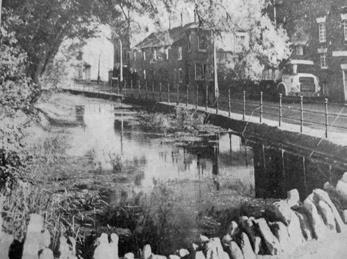
2 minute read
Local History – Bourne in the 1960s – Part 2
Local History Bourne in the
last month we started delving into a
fascinating pocket guide, issued “by authority of the Bourne Urban District Council” and available in the 1960s for one shilling, (five pence in pre-decimal terms). That same guide will this month provide information on what life was like for the 5,370 residents of this small market town.
1960 s
Part Two
On the subject of public amenities, we are assured that, “Although rightly proud of its history, the Bourne of today is not content to live in the past”. Our air was “dry and bracing” and, in quality and quantity, the water supply was second to none. “The newly constituted South Lincolnshire Water Board… draws its supply and has the main pumping station in Bourne. It is estimated that there are about 130 true artesian bores within the Urban District, supplying farms, factories, housing etc”, the guide goes on to explain. It then refers to a “large electricity grid transformer station being situated in Manor Lane” and gas “no longer made here but brought in piped mains”. Many of us can still recall the gasometer in Victoria Place, shortly after having passed Bourne County Primary School and gone under the railway bridge next to the school on Abbey Road.
On the subject of housing, we read that, “Many and varied are the housing styles”, and of the 1,750 domestic properties, 546 are owned by the Council. Much private development was said to be in progress, suggesting that it was becoming an attractive location for many, and the rapid expansion of Peterborough about to occur around this time was soon to lead to a long and steady growth in housing stock, continuing right up to the present day.
The guide now considers public health, referring to the Butterfield Cottage Hospital on the corner of North Road and Meadowgate as “a general hospital of no mean repute”, (talking of which, how many of us old Brunnians could ever forget the threatening presence of dear Sister Bristow? – Ed.)

The town and surrounding villages were also served by the Bourne Chest Hospital on South Road, also known as the “Isolation Hospital” due to its use as a centre for Tuberculosis patients. The last twenty years have seen this site now occupied by houses on roads echoing names of former medical practitioners of the town; Holloway, Tipler, Finn, Gilpin, Windle and Tully. Sisters Windle and Tully were the two ‘Queens District Nurses’ mentioned in the guide who “resided in and gave yeoman service to the town”.

Years before the arrival of today’s medical centres on North Road, Exeter Street and St Gilbert’s Road, the residents of Bourne would have to make do with the services provided by the county at the old National School in North Street, (now the Conservative Party offices). Here, we are informed, was a weekly clinic and consultant service with special emphasis on children. To complete this rather meagre offering, there would be “welfare facilities and home helps readily available”!










